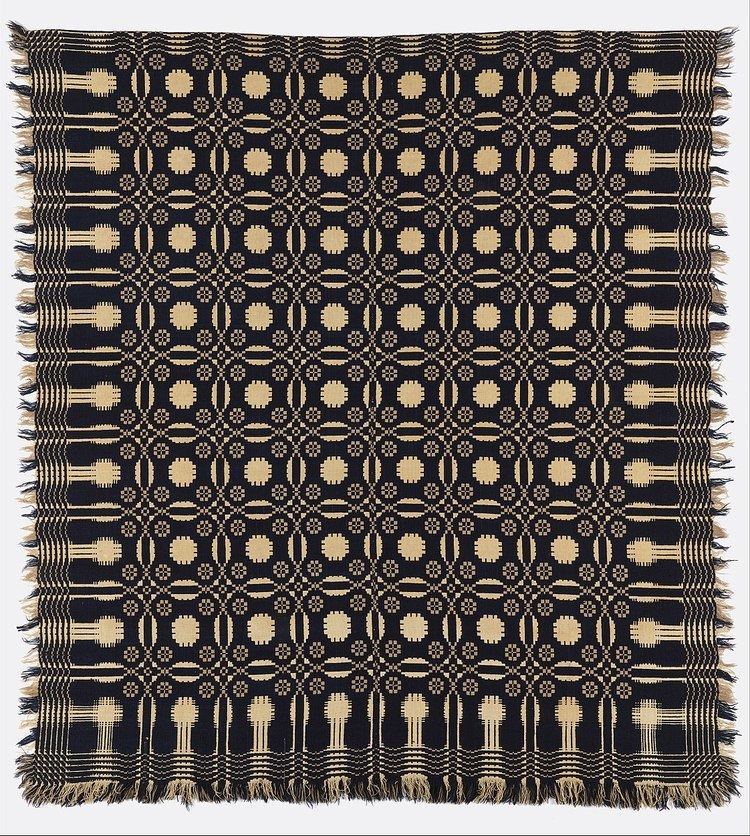 | ||
A woven coverlet or coverlid is a type of bed covering with a woven design in colored wool yarn on a background of natural linen or cotton. Coverlets were woven in almost every community in the United States from the colonial era until the late 19th century.
History
Coverlets of 18th century America were twill-woven with a linen warp and woolen weft. The wool was most often dyed a dark blue from indigo, but madder red, walnut brown, and a lighter "Williamsburg blue" were also used.
From the turn of the 19th century, simple twill-woven coverlets gave way to patterned hand-woven coverlets made in two different ways:
Summer-winter coverlets were reversible, and the summer-winter term refers to the structure not the color. The summer-winter coverlet should not be confused with double weave and is more closely related to overshot. Like double weave, it is dark on one side and light on the other but there is only one layer of cloth, therefore it is much lighter in mass and thickness.
Following the introduction of the jacquard loom in the early 1820s, machine-woven coverlets in large-scale floral designs became popular.
